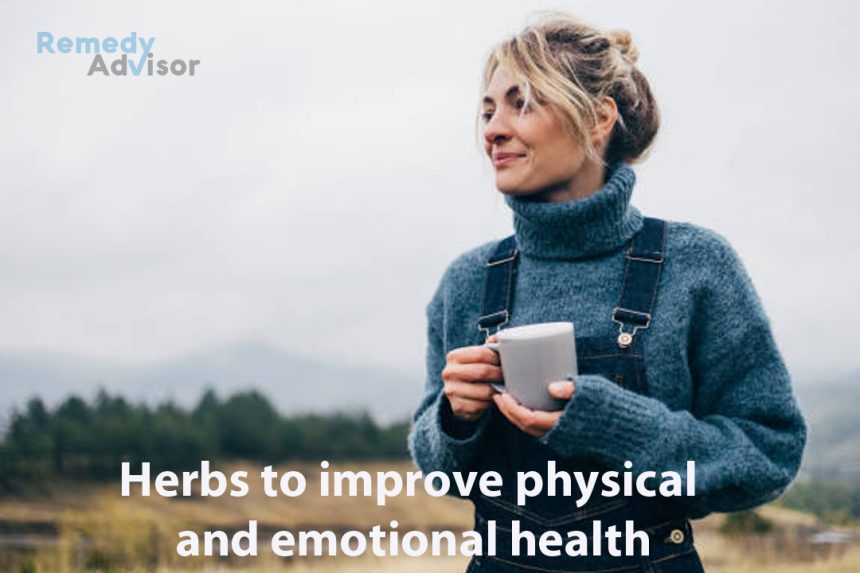In recent years, we’ve come to appreciate anew the medicinal value of herbs. Used properly, herbs offer a safe, natural alternative to many drugs to energize, relax, help wounds heal, etc.
Most people buy their herbs at a health food store. But many herbs are easy to grow, whether you’ve got a big backyard or just a few pots on a porch.
Gardening is good for you
Gardening is a wonderful antidote for psychological stress a source of solitude, a respite from everyday problems. And with all the digging, hoeing, etc., it gives a pretty good workout.
You might even discover that gardening is good for the spirit. It’s one thing to read “all things are connected,” quite another to experience it in your garden.
Tending your herbs every day, you see in concrete terms how sun, rain, soil and your own care affect your plants. You begin to feel as if you were an integral part of the rhythms of nature. Herbs can be grown from seedlings or seeds.
Chamomile
This plant produces daisy-like flowers on stalks that grow up to three feet tall. Full sunlight is best, but it tolerates partial shade.
German chamomile grows erect and can be planted six to eight inches apart. Roman chamomile is low, with creeping stems. Allow 18 inches between plants.
Uses: Chamomile tea, prepared from freshly picked or dried chamomile flowers, is quite relaxing. Taken 15 minutes before bedtime, it induces sleep. Chamomile tea also calms cranky toddlers and eases teething pain.
Caution: If you’re allergic to ragweed, avoid chamomile tea
Comfrey
This bushy plant grows three to five feet high, with drooping tubular flowers that range in color from blue to yellow and cream. Comfrey prefers full sun but will grow in partial shade. Give each plant at least three square feet.
Uses: Comfrey is for external use only. A strong comfrey decoction a tea-like solution used on the skin promotes healing of cuts, burns and bruises.
Fennel
This herb grows up to five feet tall, with tiny yellow flowers that appear at midsummer. Plant six inches apart, preferably in full sunlight.
Uses: Fennel tea aids digestion. It also reduces colic in infants and flatulence in children and adults.
Feverfew
This hardy two-foot perennial bears white daisy-like flowers. Plant seedlings in full sun or partial shade, spacing them 12 inches apart. Feverfew thrives even indoors in a pot, as long as it gets direct sunlight.
Uses: A tea of feverfew leaves has been shown to reduce the severity and intensity of migraine headaches. It can be drunk up to three times a day, between meals. Or simply chew one to four fresh leaves a day.
Caution: Stop using if you develop mouth sores.
Lavender
This plant grows up to two feet tall. Its lovely flowers yield a sweet, clean fragrance. Plant in full sun or partial shade, one to three feet apart. It will grow in containers, too.
Uses: Lavender tea calms jangled nerves. A cold lavender tea compress relieves headaches.
Lovage
One lovage plant, which grows up to six feet tall, can supply your needs for a hill year. It prefers partial shade.
Uses: Use lovage as you would use celery, in cheese and egg dishes, soups, stews, salads, etc. You can apply lovage tea to wounds as an antiseptic. Or drink it to stimulate digestion.
Marjoram
This plant grows one foot tall, with tiny white or pink blossoms. Space seedlings six to eight inches apart, in full sun if possible. It will grow in containers.
Uses: Marjoram tea helps settle an upset stomach. Use it lukewarm as a gargle for throat inflammation.
Pennyroyal
This perennial grows up to one foot high, with bluish flowers. Set plants in full sun or partial shade, six to 10 inches apart.
Uses: Pennyroyal is a natural insect repellent. Rub the leaves on your skin or put a bouquet of pennyroyal sprigs on your picnic table. Occasionally crush the leaves to release their bug-unfriendly fragrance.
Caution: Do not take pennyroyal internally. It is poisonous.
Thyme
Thyme grows up to 15 inches high. Set groups of plants one foot apart, in full sun or partial shade.
Uses: Thyme tea settles the stomach. Also, add to bath water. Thyme’s antiseptic qualities help raw, rough skin.
Making herbal tea
Steep fresh or dried herbs for 20 minutes in a tightly stoppered container. Immediately refrigerate any unused portion.
Some herbs can cause stomach irritation, headache and other side effects. To start out, make an extremely weak tea. See how it affects you. Once you’re confident that you can tolerate weak tea, increase the strength a bit to find what works best for you.







